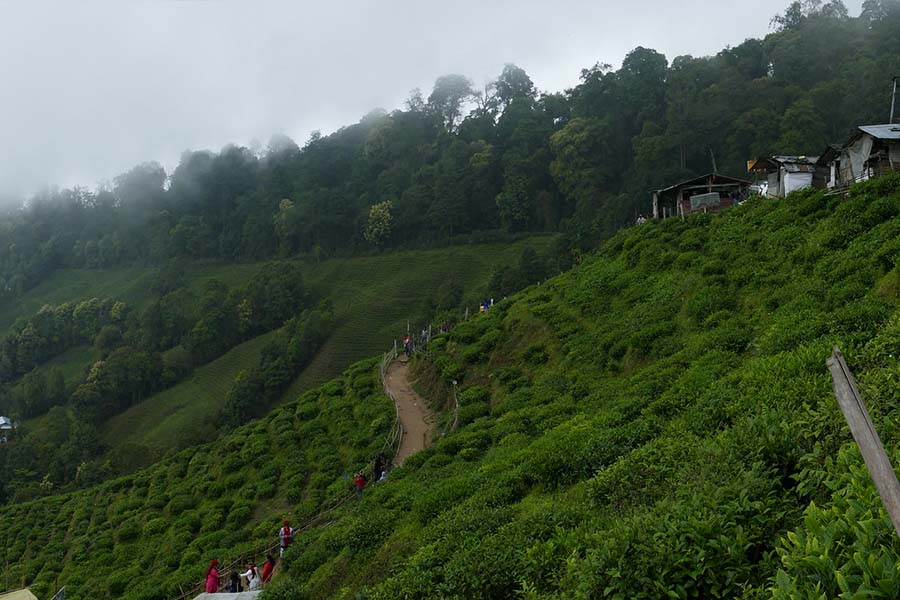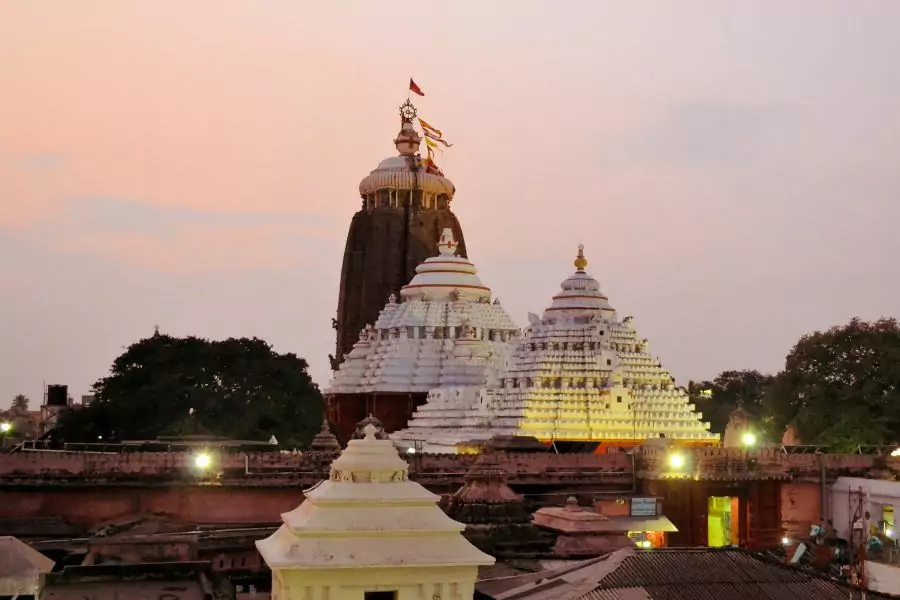Rameshwaram Temple – History, Festivals, How to Reach

Rameshwaram, located on Pamban Island in Tamil Nadu, stands as one of India’s most revered pilgrimage destinations. The majestic Ramanathaswamy Temple, which holds immense religious significance for Hindus, draws devotees and tourists from all over the world. With intricate architecture, a spiritual ambiance, and historical importance, the temple captivates everyone who visits. This guide provides an in-depth look at the temple’s history, architecture, rituals, and more.
Introduction to Rameshwaram Temple
Rameshwaram Temple, also known as Ramanathaswamy Temple, is dedicated to Lord Shiva. As one of the twelve Jyotirlingas, it holds an essential place in Hinduism. Legends say Lord Rama worshipped Shiva here to absolve himself of the sin of killing the demon king Ravana. This association with the Ramayana epic amplifies the temple’s spiritual significance.
Historical Significance of Rameshwaram Temple
The history of Rameshwaram Temple stretches back to ancient times. The Pandya rulers originally built the temple in the 12th century. Over time, various rulers, including the Cholas, Vijayanagar Empire, and the Sethupathi kings, expanded and renovated the temple. These dynasties contributed significantly to its grand architecture, cementing its status as one of South India’s most important pilgrimage sites.
Architectural Marvel of Ramanathaswamy Temple
Ramanathaswamy Temple stands as a masterpiece of Dravidian architecture. The temple’s corridors, known as the “Third Corridor,” stretch over 1,200 meters, making them the longest of any temple in India. Intricately carved pillars adorn these corridors, each telling stories from Hindu mythology. The temple’s towering gopurams (towers) also stand tall, showcasing detailed sculptures and carvings.
The main deity, Ramanathaswamy (Lord Shiva), is enshrined in the inner sanctum. Legends say Lord Rama himself installed the lingam here. The temple also houses shrines dedicated to other deities, including Parvati, Ganesha, and Vishnu, offering a holistic spiritual experience for devotees.
The Sacred 22 Wells: Theerthams of Rameshwaram
One of the temple’s unique aspects is the presence of 22 sacred wells, known as Theerthams, spread throughout the complex. Each well carries distinct spiritual significance. Devotees perform ritual baths in these wells, as the water is believed to purify the soul. The most important well, Agni Theertham, sits near the temple’s entrance, where pilgrims first take a dip before entering the temple.
Important Rituals and Pujas at Rameshwaram Temple
Rameshwaram Temple is known for its elaborate rituals and pujas, performed daily by temple priests. The day begins with the “Suprabhatam” (morning prayer) to awaken the deity, followed by “Abhishekam” (holy bath) and “Alankaram” (decoration of the deity). The temple offers special rituals like “Rudra Abhishekam,” “Sahasranama Archana,” and “Shiva Sahasranama Homam” for devotees seeking specific blessings.
Pilgrims can participate in these rituals by offering prayers and donations to the temple. Witnessing these age-old traditions provides a spiritually uplifting experience, adding to the temple’s divine aura.
Festivals Celebrated at Rameshwaram Temple

Rameshwaram Temple serves as the focal point for several Hindu festivals, with Maha Shivaratri being the most significant. During Maha Shivaratri, thousands of devotees gather to offer prayers and participate in night-long vigils. The temple also celebrates other important festivals, such as Navaratri, Ram Navami, and Diwali, each marked by special rituals, cultural performances, and processions.
How to Reach Rameshwaram Temple
Rameshwaram is well-connected by road, rail, and air. The nearest airport, Madurai International Airport, lies approximately 170 kilometers away. From Madurai, you can take a bus or hire a taxi to reach Rameshwaram. The town also has a railway station with regular trains connecting it to major cities like Chennai, Bangalore, and Coimbatore. If traveling by road, Rameshwaram is accessible via National Highway 49, making it easy to reach by car or bus.
Best Time to Visit Rameshwaram Temple
The best time to visit Rameshwaram Temple falls between October and February, during the winter months when the weather is cool and pleasant. This period is ideal for temple visits, sightseeing, and exploring the town. The monsoon season, from July to September, brings heavy rainfall, which might hinder travel plans. However, the temple remains open year-round, and the monsoon showers add a different charm to the landscape.
Nearby Attractions in Rameshwaram

While the temple stands as the main attraction, Rameshwaram offers several other places of interest:
- Pamban Bridge: An engineering marvel, the Pamban Bridge connects Rameshwaram to the mainland. The view from the bridge is breathtaking, especially at sunrise and sunset.
- Dhanushkodi: Known as the “Ghost Town,” Dhanushkodi is a deserted town at the tip of Pamban Island. It offers a surreal experience with its ruins and pristine beaches.
- Gandhamadhana Parvatham: This hillock provides panoramic views of the island and is believed to have imprints of Lord Rama’s feet.
- Adam’s Bridge (Ram Setu): A chain of natural limestone shoals between Pamban Island and Sri Lanka, Adam’s Bridge is steeped in mythology and is believed to be the remnants of the bridge built by Lord Rama’s army.
Accommodation Options in Rameshwaram
Rameshwaram offers a range of accommodation options to suit different budgets:
- Luxury Hotels: Several luxury hotels provide top-notch amenities, including swimming pools, spa services, and fine dining.
- Mid-Range Hotels: Travelers seeking comfort at a reasonable price will find mid-range hotels with good facilities and convenient locations.
- Budget Accommodation: Budget travelers can opt for guesthouses and lodges, which offer basic amenities and a comfortable stay.
Travel Tips for Rameshwaram Temple
- Dress Modestly: As a place of worship, visitors should dress modestly, with women wearing sarees or salwar kameez and men wearing dhotis or trousers.
- Plan Early Morning Visits: To avoid crowds, plan your visit early in the morning, especially during peak festival seasons.
- Respect Temple Traditions: Follow the temple’s customs and traditions, including removing shoes before entering and maintaining silence inside the temple premises.
Conclusion
Rameshwaram Temple stands as a testament to India’s rich spiritual heritage. Its combination of historical significance, architectural brilliance, and spiritual energy makes it a destination that transcends religious boundaries. Whether you’re a devotee seeking blessings or a traveler interested in exploring India’s cultural legacy, Rameshwaram Temple offers an experience that is both humbling and awe-inspiring.
FAQs
- What is the significance of Rameshwaram Temple? Rameshwaram Temple is one of the twelve Jyotirlingas and holds immense religious significance as the place where Lord Rama worshipped Lord Shiva.
- How many Theerthams are there in Rameshwaram Temple? The temple has 22 sacred wells (Theerthams), each with its own spiritual significance.
- Can non-Hindus visit Rameshwaram Temple? Yes, non-Hindus can visit the temple, but they are expected to respect the customs and traditions.
- What are the timings of Rameshwaram Temple? The temple is open from 4:30 AM to 1:00 PM and 3:00 PM to 8:30 PM.
- Does Rameshwaram Temple allow photography? Generally, photography is not allowed inside temple premises to maintain its sanctity.


